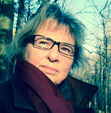Nina Munteanu's Blog, page 17
November 27, 2010
Sensual Writing and Why I Love the Smell of Smoke
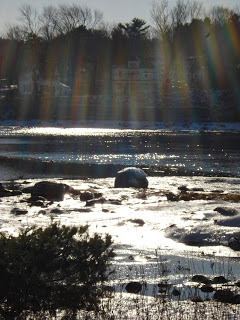 Last week, as I was driving down a winding country road on my way to Bridgewater from Lunenburg, I caught sight of the billowing smoke of a small fire. Someone was obviously doing some roadside autumn clearing.
Last week, as I was driving down a winding country road on my way to Bridgewater from Lunenburg, I caught sight of the billowing smoke of a small fire. Someone was obviously doing some roadside autumn clearing.Without thinking, I slid the window open and inhaled deeply as I passed through the billows. I was preparing to experience the exquisite "taste of home". As I breathed in the aroma of burning vegetation, memories of outdoor campfires and old wood-burning stoves flooded in from my childhood. A goofy smile slid across my face as I bathed in the joyful innocence of adventure, wonder and the comfort of the hearth. I'd had a wonderful childhood and the smell of smoke brought it back to me in its full glory.
What does this have to do with sensual writing? Everything. That's because writing is metaphoric. That is what storytelling is: sharing universal truth through metaphor, delivered from the heart, where these lie. Sensual writing doesn't just involve making sure to include at least a few senses like sight, sound, smell, taste and touch in your narrative--though this is a good writing mantra. To write sensually involves much more than the simple description of a sense, though this is certainly the first step (and something all too often neglected by novice writers).
To not connect a described sense to a memory or emotion is to miss a very important opportunity as a storyteller: that of enlightening the reader on some aspect of the POV character experiencing the sense (things like their history, the quality and nature of their relationships, their viewpoints, education, prejudices, how and what they've experienced in their life).
Here's what I mean:
EXAMPLE 1: Ben walked into the Grand Banker Pub and immediately caught the tantalizing aroma of garlic and pears amid the din of jubilant laughter, cackles and desultory conversation. The amber light enhanced the rich tones of nautical oak. He saw some friends drinking in the corner and sauntered toward them, smiling.
EXAMPLE 2: Ben hesitated at the Grand Banker Pub door, inhaling the exquisite aroma of garlic and pears amid the din of jubilant laughter, cackles and desultory conversation. For a moment he was back on the boat, reliving the party that changed his life. He'd stopped eating pears after that. He caught sight of his friends drinking in the corner, beneath the amber light. Like a sailor seizing a rope, he sauntered toward them, a huge smile pasted on his face.
The first example describes; the second example emotes. The first example describes the place well but it doesn't provide us with any information about Ben, except that he likes the aroma of garlic and pears. We don't know why. In the second example, his senses are used to hint at intrigue linked to memories that, in turn, are linked to the associated sense—in this case the smell of garlic and pears. This is the power of sensual writing.
Bringing it back home with the senses.
Other articles I've written on how to improve your writing appear on the righthand sidebar of my blog. Here are some that are most relevant to this article:
1. The Novelist: Sensual Writing
2. The Novelist: The Importance of Setting
Published on November 27, 2010 20:31
November 13, 2010
Happy Birthday, Toulouse!... A Cat is a Cat is a Cat…Or is it?
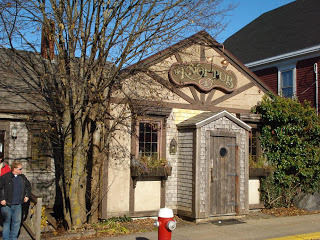 To celebrate his birthday today, I treated Toulouse to lunch at The Knot Pub in Lunenburg. The Knot is a friendly pub where locals go to eat homemade food and tell stories. According to the staff, "the person sitting next to you could be a scallop fisherman, Christmas tree farmer, Norwegian sailor, world famous actor, musician, painter, or scholar – you never know who you're going to meet at The Knot! The outside looks a bit like a quaint little seafaring shack complete with port hole in the front door. Inside the pub exudes sea-shanty charm, with lots of local boat building oak, nautical brass fittings, copper pennies on the ceiling, flags and other nautical things. The place even has its resident ghost, a lady who apparently glides by, especially when you've had a few too many pints.
To celebrate his birthday today, I treated Toulouse to lunch at The Knot Pub in Lunenburg. The Knot is a friendly pub where locals go to eat homemade food and tell stories. According to the staff, "the person sitting next to you could be a scallop fisherman, Christmas tree farmer, Norwegian sailor, world famous actor, musician, painter, or scholar – you never know who you're going to meet at The Knot! The outside looks a bit like a quaint little seafaring shack complete with port hole in the front door. Inside the pub exudes sea-shanty charm, with lots of local boat building oak, nautical brass fittings, copper pennies on the ceiling, flags and other nautical things. The place even has its resident ghost, a lady who apparently glides by, especially when you've had a few too many pints. Sarah recommended the Knot's Ale, made by the Propeller Brewery, a lovely nut-brown ale rich in complicated flavors that quench your thirst.
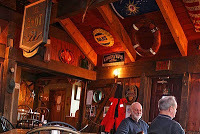 We drank copious amounts of Knot's Ale over an exquisite platter of seafood appetizers. Then for our late lunch we chose their recommended Pub Club. We hesitated over their delectable home-cut fries then went with the Greek salad. They didn't skimp on the feta and the dressing was tasty but not over-stated.
We drank copious amounts of Knot's Ale over an exquisite platter of seafood appetizers. Then for our late lunch we chose their recommended Pub Club. We hesitated over their delectable home-cut fries then went with the Greek salad. They didn't skimp on the feta and the dressing was tasty but not over-stated.We lingered over our delicious lunch, feeling very happy and continued to pick at our appetizers. Our conversation wandered over a diverse tapestry of topics that covered our many adventures and landed on some very odd subjects indeed. Here are some highlights.
 Of course the Caribbean cruise came up and the subject of Toulouse's rather deft handling of a Harley Davidson Sportster during our tour of Cozumel:
Of course the Caribbean cruise came up and the subject of Toulouse's rather deft handling of a Harley Davidson Sportster during our tour of Cozumel:"Where did you learn to drive one of those? And how," I probed, "DO you negotiate the handle bar with only a… well… stuffed paw?" I felt a little like I was back on my sentient ship, Benny, interroga—er—interviewing Jean-Luc Picard or Lynn Margulis.
Toulouse shrugged and helped himself to the last olive. "Some things are not knowable in the visible world…"
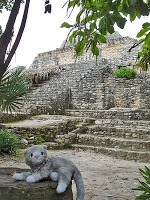 I laughed. He was doing his Zen of Traveling thing again. "Like that deadly coral snake on the stairway of the Mayan Temple," I added. "The one that you did the Jedi mind trick on …"
I laughed. He was doing his Zen of Traveling thing again. "Like that deadly coral snake on the stairway of the Mayan Temple," I added. "The one that you did the Jedi mind trick on …"Toulouse smiled and stroked his whiskers. "Yeah, that one," he said. I think he started to purr…
I then raised my third glass of beer to my feline friend and grinned with delight. "Happy birthday, Toulouse!" I must have said that for the tenth time.
Toulouse responded with the same enthusiasm he did the previous nine toasts: a vigorous nod, a hearty sip of his Propeller ale and a great big smile. "This time last year we were on a road trip across Canada and arrived in Nova Scotia in time to see her beautiful autumn colors," he said.
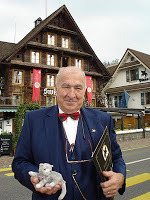 "Yes, and on my last birthday, we were in Switzerland, celebrating a royal dinner made by a Prince in the pastoral village of Merlischachen. Then I got my birthday wish and we were detained by Eyjafjallajökull! For a whole other two weeks!"
"Yes, and on my last birthday, we were in Switzerland, celebrating a royal dinner made by a Prince in the pastoral village of Merlischachen. Then I got my birthday wish and we were detained by Eyjafjallajökull! For a whole other two weeks!""Ah, is that what happened? You made a wish?" Toulouse raised a brow (yes, cats have brows: check next time—if your cat lets you, that is…) and stroked his whiskers with a paw. "We made the best of our situation with a grand exploration of the true Switzerland, didn't we?"
Our exploration of Lake Lucern and the Swiss Alps led us into truly enchanting places like the magical forests of the Wagetaler See. "We sure got to know the Swiss." I laughed.
"And their café crèmes!" Toulouse said, purring.
It turned out to be perhaps the best trip I'd ever experienced. We'd given ourselves to the moment and all that it offered. And all because of a pesky volcano.
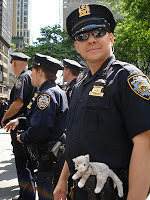 Toulouse helped himself to an olive. He cocked his head and studied me for a moment. "And weren't we in New York around your birthday the year before?"
Toulouse helped himself to an olive. He cocked his head and studied me for a moment. "And weren't we in New York around your birthday the year before?"I nodded, remembering our walks through Manhattan and how Toulouse ended up on the butt of a Policeman's gun.
"And wasn't it Paris on a previous birthday of yours?"
I laughed again and leaned back in my chair with fond memories. "Yes, the city of lights! My favorite city in some ways, Toulouse… Your town. You showed me some of your old haunts. Remember the Jardin des Tuileries where we snuck in a bottle of red wine and soft camembert cheese and sat on a park bench to enjoy the best of Paris? We savored escargot, exotic cheeses and fine wine…every day!" I summoned my memory cells into overdrive. "And weren't we in Niagara Falls on your birthday before that?"
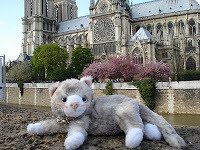 Toulouse grinned like a Cheshire Cat… well, he IS a cat, after all. "You'd launched your book, Darwin's Paradox in Toronto and were touring with book signings all over the planet, but mostly in Ontario…"
Toulouse grinned like a Cheshire Cat… well, he IS a cat, after all. "You'd launched your book, Darwin's Paradox in Toronto and were touring with book signings all over the planet, but mostly in Ontario…"I laughed. "I never could figure out why Torontonians liked my book so much considering that my story had their own city practically destroyed by an industrial plague."
"They like a good thrill," Toulouse said. "The Niagara Falls hydro-electric power plant was the creation of Nikola Tesla, did you know? One of your heroes."
I nodded. Yes, I did know. "He helped build the first hydro-electric power plant in 1895, which started the electrification of the world. He was way ahead of his time. A brilliant man and so misunderstood."
"There's a statue of him in Niagara Falls NY to commemorate the historic event. That's where we met, remember?"
"How could I forget!" I said. "Seems like we've known each other for much longer."
"Yes, it does, doesn't it?…Well, we've had enough adventures together to last some people's lifetimes…"
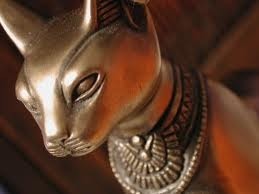 "And many more to come!" I added. "We haven't been out in space together yet…"Then I blurted out, "Where are you really from, Toulouse?" He grinned and stroked his whiskers again. I knew he wouldn't tell me. I hadn't plied him with enough beer. "I mean, it isn't every day one encounters a stuffed cat with such style and finesse…A cat who speaks six languages fluently and knows how to make a Café de Paris sauce…" I said.
"And many more to come!" I added. "We haven't been out in space together yet…"Then I blurted out, "Where are you really from, Toulouse?" He grinned and stroked his whiskers again. I knew he wouldn't tell me. I hadn't plied him with enough beer. "I mean, it isn't every day one encounters a stuffed cat with such style and finesse…A cat who speaks six languages fluently and knows how to make a Café de Paris sauce…" I said. "Did you know that cats were very sacred to the ancient Egyptians?" he said. I thought it a clever ruse to draw me away from the subject of his origin. "Cats were considered demigods. Anyone caught harming or killing a cat, even by accident, was put to death."
I sipped my beer and couldn't help wondering if this had anything to do with Toulouse's history."Like Bast," I said proudly. "The Egyptian cat-goddess and protector of women, children and domestic cats."
Toulouse looked impressed. "She was also the goddess of sunrise, music, dance, and pleasure as well as family, fertility, and birth," he added. "She was known as the Light Bearer and the Lady of Truth."
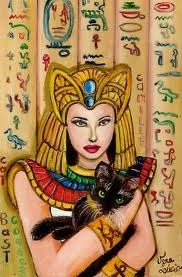 I had my little computer sitting on the table with me, as per usual, and as Toulouse helped himself to more salad, I surreptitiously googled 'Bast' and glanced at the information. Her credentials were impressive. I tapped my lips with my finger as though digging into my memory. "I seem to recall that her name means devouring lady. She has the body of a woman and the head of a domestic cat, doesn't she?"
I had my little computer sitting on the table with me, as per usual, and as Toulouse helped himself to more salad, I surreptitiously googled 'Bast' and glanced at the information. Her credentials were impressive. I tapped my lips with my finger as though digging into my memory. "I seem to recall that her name means devouring lady. She has the body of a woman and the head of a domestic cat, doesn't she?"Toulouse nodded and I proudly went on, "She's normally shown holding the sacred rattle, called a Sistrum, and she's symbolized by the Wadjet, the divine, all-seeing eye of Ra."
Toulouse nodded again. "Good googling, Nina." He'd caught my wandering eye. "Yes, Ra gave Bast the Uraeus or serpent of wisdom," Toulouse happily added. "According to Herodotus, Bast was a happy and benign Deity who brought good fortune, music, dance and joy to everyone."
Remind you of anyone? I laughed and drained my glass. The attentive waiter brought us two more bottles of Propeller ale and a complimentary platter of fresh steamed mussels. I think he was listening in on our conversation and wanted to hear more.
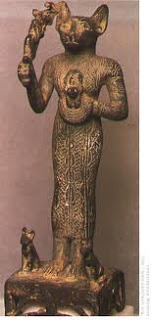 "Did you know that Wadjet means whole or healthy?" Toulouse went on, taking his newly charged wine glass in his paw. "It's also a symbol of life and resurrection. And therefore, thought to have healing powers."
"Did you know that Wadjet means whole or healthy?" Toulouse went on, taking his newly charged wine glass in his paw. "It's also a symbol of life and resurrection. And therefore, thought to have healing powers.""I heard that the symbol was used as a measurement system for ingredients in medicines, pigments, land and grain. It could be divided into six symbols and fractions all to do with the various senses like taste, smell, and sight."
"Yup," returned Toulouse after a long sip of his beer. "The Rx symbol used by pharmacies originated with the Eye of Horus. The fractions symbolized the shattering of Horus's eye by the god Sett into six pieces. The system of fractions is based on halves, starting with half of one then half of that and so on until you get 1/64." He then leaned forward on his little paws. " Did you know that when you add the symbols together the total comes to 63/64? Some scholars suggest that the remaining 1/64 represents the magic used by Thoth to restore Horus's eye but others think it means that perfection isn't possible."
"What do you think?" I asked.
 His big glass eyes sparkled in the rich amber light of the pub. "I think it's a good metaphor for achieving spiritual wholeness. It takes a little magic to find all your parts and become whole." Then he grinned that Cheshire Cat grin again and I began to wonder if he'd brought up Bast for more than to simply distract me. Wait! I was the one who brought up Bast!...
His big glass eyes sparkled in the rich amber light of the pub. "I think it's a good metaphor for achieving spiritual wholeness. It takes a little magic to find all your parts and become whole." Then he grinned that Cheshire Cat grin again and I began to wonder if he'd brought up Bast for more than to simply distract me. Wait! I was the one who brought up Bast!...Anyway, Happy Birthday, Toulouse… :)
Published on November 13, 2010 18:08
November 3, 2010
Galactic Party at the Lord Nelson Hotel!
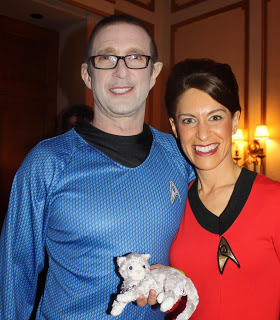 Imagine a royal palace on an alien planet in a galaxy far far away…add hundreds of bizarre and wonderfully costumed aliens from all over the universe and you have Hal-Con at the Lord Nelson Hotel.
Imagine a royal palace on an alien planet in a galaxy far far away…add hundreds of bizarre and wonderfully costumed aliens from all over the universe and you have Hal-Con at the Lord Nelson Hotel.Hal-Con at the Lord Nelson Hotel was out of this world!
Toulouse and I attended Hal-Con last weekend, where I launched my latest SF thriller Angel of Chaos and gave several workshops. Hal-Con is the prime science fiction / fantasy / comic & gaming convention in Halifax; after an over-decade hiatus, it returned this year to a sell-out crowd of enthusiastic fans. Over 1,200 fans poured into the splendid lobby of this historic hotel on Halloween Friday and formed a moving sea of elaborately costumed SF and Fantasy characters beneath its sparkling chandeliers. Aliens, characters, and robots from Doctor Who, Star Wars, Star Trek, Iron Man, and many more universes milled about, entertaining hotel guests in the elevators, hallways, lobbies and Victoria Arms restaurant pub all weekend.
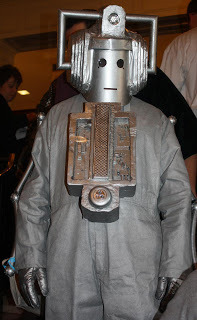 Located near the historic waterfront of downtown Halifax, the Lord Nelson Hotel provided one of the coolest venues for an SF con that I have experienced (and I've been to many cons all over North America). This recently renovated 1928 building radiated a traditional elegance that, together with its friendly staff, embraced the joyful "other" of SF/Fantasy fandom with charming maritime hospitality. Named after England's greatest naval hero, Horatio Nelson, it is Halifax's most historic hotel and frequent host to royalty, politicians and celebrities from all over the world. Celebrity guests have included the Rolling Stones, Keith Urban, Anne Murray, Jerry Seinfeld, Ozzy Osbourne and Paul McCartney.
Located near the historic waterfront of downtown Halifax, the Lord Nelson Hotel provided one of the coolest venues for an SF con that I have experienced (and I've been to many cons all over North America). This recently renovated 1928 building radiated a traditional elegance that, together with its friendly staff, embraced the joyful "other" of SF/Fantasy fandom with charming maritime hospitality. Named after England's greatest naval hero, Horatio Nelson, it is Halifax's most historic hotel and frequent host to royalty, politicians and celebrities from all over the world. Celebrity guests have included the Rolling Stones, Keith Urban, Anne Murray, Jerry Seinfeld, Ozzy Osbourne and Paul McCartney.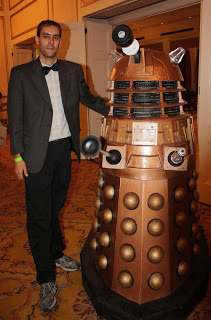
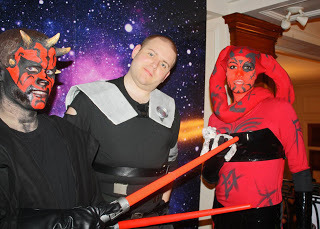 While I attended to my duties as a writer, Toulouse met up with old friends and made new ones. We met lots of cool people, including Ramona and her two sons, Sterling and Milan—both gifted writers and illustrators from Nova Scotia. We met at the Nova Scotia Writer's Federation table, where I'd parked myself to sell my books, and ended up at the pub to discuss fascinating topics like the role of the artist and the goodness of green smoothies. Toulouse and I spoke with Walter Koenig (who writes a cool comic series these days) and Denise Crosby (they played Chekov and Tasha Yar in the original Star) Trek). Robert Maillet from Sherlock Holmes was also there. Nathan Fillion surprised attendees with a telephone appearance to defend Mal in the "Geeks versus Nerds Debate" for Han Solo versus Malcolm Reynolds. Special guests also included Kevin Murphy, Bill Corbet, P.J. Haarsma, Coner McCreery, Drakina Muse, Matthew LeDrew, Kenneth Tam, Ellen Curtis, David C. Rhind, and yours truly. You can read about Toulouse's experience in his article, Hal-Con and the Classy Lord Nelson Hotel, on his blog, Toulouse LeTrek, the COOL Travel Cat.
While I attended to my duties as a writer, Toulouse met up with old friends and made new ones. We met lots of cool people, including Ramona and her two sons, Sterling and Milan—both gifted writers and illustrators from Nova Scotia. We met at the Nova Scotia Writer's Federation table, where I'd parked myself to sell my books, and ended up at the pub to discuss fascinating topics like the role of the artist and the goodness of green smoothies. Toulouse and I spoke with Walter Koenig (who writes a cool comic series these days) and Denise Crosby (they played Chekov and Tasha Yar in the original Star) Trek). Robert Maillet from Sherlock Holmes was also there. Nathan Fillion surprised attendees with a telephone appearance to defend Mal in the "Geeks versus Nerds Debate" for Han Solo versus Malcolm Reynolds. Special guests also included Kevin Murphy, Bill Corbet, P.J. Haarsma, Coner McCreery, Drakina Muse, Matthew LeDrew, Kenneth Tam, Ellen Curtis, David C. Rhind, and yours truly. You can read about Toulouse's experience in his article, Hal-Con and the Classy Lord Nelson Hotel, on his blog, Toulouse LeTrek, the COOL Travel Cat.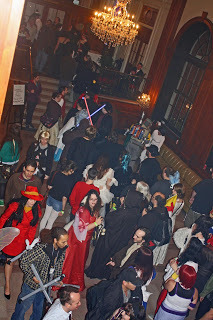 The workshop I gave on Friday was on "the Hero's Journey", a lecture I often give for its value to writers in identifying story arc and integrating plot with theme and character. The next day, during the launch of Angel of Chaos, I spoke of the writer's journey and invoked Joseph Campbell, who suggested that the artist is like a shaman, who keeps our myths alive—those ancient myths "designed to harmonize the mind and the body" and bring us "home".
The workshop I gave on Friday was on "the Hero's Journey", a lecture I often give for its value to writers in identifying story arc and integrating plot with theme and character. The next day, during the launch of Angel of Chaos, I spoke of the writer's journey and invoked Joseph Campbell, who suggested that the artist is like a shaman, who keeps our myths alive—those ancient myths "designed to harmonize the mind and the body" and bring us "home". I described my own "hero's journey" as a writer. Choosing to be an author is like choosing to fall in love. To "follow your bliss". To follow your bliss is to follow your heart. And to follow your heart is to let the divine touch you and come to bliss. The artist interprets the divinity inherent in nature and in all unseen things. This is ultimately our role: to communicate myth for today: to yield to the flame of rapture and, like Prometheus, bring that flame to Earth, through story. That is true bliss. Sometimes we are painfully burned by it. This is the paradox of "bliss", because the spirit of sacrifice lies at the core of true bliss. It's just like falling in love.
Follow your bliss. Find where it is and don't be afraid to follow it. Take the journey…with me…
…We have not even to risk the adventure alone, for the heroes of all time have gone before us. The labyrinth is thoroughly known. We have only to follow the thread of the hero path, and where we had thought to find an abomination, we shall find god. And where we had thought to slay another, we shall slay ourselves. Where we had thought to travel outward, we will come to the center of our own existence. And where we had thought to be alone, we will be with all the world—Joseph Campbell
Published on November 03, 2010 19:30
October 26, 2010
Nina Munteanu Launches Angel of Chaos at Hal-Con and the Hero's Journey
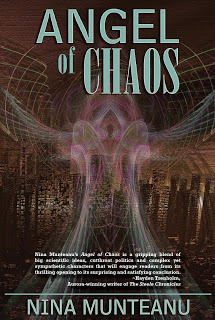 Angel of Chaos is ... a gripping blend of big scientific ideas, cutthroat politics and complex yet sympathetic characters that will engage readers from its thrilling opening to its surprising and satisfying conclusion —Hayden Trenholm, Aurora-winning author of The Steele Chronicles
Angel of Chaos is ... a gripping blend of big scientific ideas, cutthroat politics and complex yet sympathetic characters that will engage readers from its thrilling opening to its surprising and satisfying conclusion —Hayden Trenholm, Aurora-winning author of The Steele ChroniclesI'm looking forward to attending Hal-Con, the premiere science fiction convention this weekend (October 29-31, 2010) at the luxurious Lord Nelson Hotel in downtown Halifax. I'll be launching my latest book, the eco-thriller Angel of Chaos (Dragon Moon Press) on Saturday morning at 10:30, with reception following, where you can eat and drink and ask me silly questions to which I will give you silly answers. You may also get an autographed copy of the book, which you can then sell on Ebay for a bazillion dollars.
The day before (on Friday at 4 pm) I'll be giving my popular writer's workshop in which I discuss common and effective plot approaches for compelling storytelling and expound on the "Hero's Journey" myth and the importance of metaphor that encompass heroic adventure in all writing.
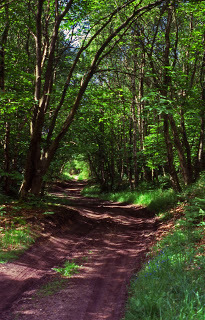 The hero's journey encompasses 1. archetypes the hero encounters [or embodies] in the various stages of her adventure; and 2. the various stages of the actual journey itself. The kind of hero also defines the quality and form of journey depicted, based on the story/myth/message intended.
The hero's journey encompasses 1. archetypes the hero encounters [or embodies] in the various stages of her adventure; and 2. the various stages of the actual journey itself. The kind of hero also defines the quality and form of journey depicted, based on the story/myth/message intended.To write a truly compelling story is to resonate with the universal truths of metaphor within the consciousness of humanity. According to scholar and mythologist Joseph Campbell this involves an open mind and a certain amount of humility; and giving oneself to the story...not unlike the hero who gives her life to something larger than herself.
Note the words he has carefully chosen in the following quote:
"Anyone writing a creative work knows that you open, you yield yourself, and the book talks to you and builds itself....you become the carrier of something that is given to you from what have been called the Muses--or, in biblical language, "God." This is no fancy, it is a fact. Since the inspiration comes from the unconscious, and since the unconscious minds of the peole of any single small soceity have much in common, what the shaman or seer [or artist] brings forth is something that is waiting to be brought forth in everyone. So when one hears the [artist's] story, one responds, "Aha! This is my story. This is something that I had always wanted to say but wasn't able to say." There has to be dialogue, and interaction between the [artist]and the community." This I call tapping into the universal truth where metaphor lives. A story comes alive when these two resonate (see my two previous articles on resonance).
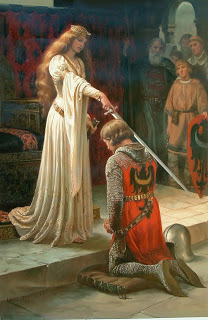 So, why are there so many stories of the hero in mythology? Campbell replies: "Because that's what's worth writing about." The hero's journey is everyone's journey. Arthur Schopenhauer discusses the question of how human beings can so participate in the peril or pain of another that without thought, she would spontaneously risk and even sacrifice her own life to save another--that what we normally think of as the first law of nature and self-preservation is suddenly dissolved in an act of selfless "rescue"? Schopenhauer's answer is that when such a psychological crisis happens, a metaphysical breakthrough occurs in which one realizes that you and the other are two aspects of one life; that our true reality is in our identity and unity with all life. This is, according to Schopenhauer, the truth of your life. And the hero is the one who has given her physical life to the realization of that truth, says Campbell.
So, why are there so many stories of the hero in mythology? Campbell replies: "Because that's what's worth writing about." The hero's journey is everyone's journey. Arthur Schopenhauer discusses the question of how human beings can so participate in the peril or pain of another that without thought, she would spontaneously risk and even sacrifice her own life to save another--that what we normally think of as the first law of nature and self-preservation is suddenly dissolved in an act of selfless "rescue"? Schopenhauer's answer is that when such a psychological crisis happens, a metaphysical breakthrough occurs in which one realizes that you and the other are two aspects of one life; that our true reality is in our identity and unity with all life. This is, according to Schopenhauer, the truth of your life. And the hero is the one who has given her physical life to the realization of that truth, says Campbell. The hero is the ultimate altruist, sacrificing her life for the greater godd. She is warrior and lover who slays the dragon of the status quo, so to speak. She enacts the ultimate in sacrifice. "The twelfth-century troubadour poetry of courtly love was a protest against the supernaturally justified violation of life's joy in truth," says Campbell."The spirit is really the bouquet of life. It is not something breathed into life, it comes out of life...[and is] one of the glorious things about the mother-goddess religions, where the world is the body of the Goddess, divine in itself...There is in these mythologies a kind of universal identity." Captured through metaphor and symbolism.
Published on October 26, 2010 03:16
October 20, 2010
What Do The Planet Earth, the Human Brain and Schumann Resonance Have in Common?
 Everything in life is vibration—Albert Einstein
Everything in life is vibration—Albert Einstein"All vibrating things in this world have their own, 'natural' frequency which they are most comfortable with," writes Sanjay Aqrawal in an Ezine article entitled "Brain Entrainment and Schumann Resonance". When a thing is subjected to an external force that makes it vibrate at a frequency it vibes with the most, the thing responds "joyfully", by vibrating at the maximum amplitude (energy). The natural frequency of that [object] is known as its 'resonating' or 'resonant' frequency, and the phenomenon is known as 'Resonance'. Physicists describe resonance as the tendency of a system to oscillate with greater amplitude at some frequencies than at others, using its stored vibrational energy.
Schumann Resonance (SR) is the global electromagnetic resonance that occurs as a set of peaks in the extremely low frequency (ELF) portion of the Earth's electromagnetic field spectrum between 3 and 69 Hz, with distinct peaks at 7.83, 14.3, 20.8, 27.3 and 33.8 Hz. Lightning discharges excite SR in the cavity formed by the Earth's conducting surface and the ionosphere.
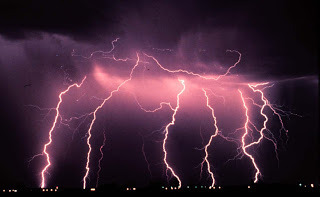 Named after German physicist Winfried Otto Schumann, who predicted it mathematically in 1952 (and first detected it in 1954—an auspicious year), SR acts as a closed waveguide. It's like a wave-bridge. "So astounding are the facts in this connection," said Nikola Tesla in 1899 of this global electromagnetic resonance, "that it would seem as though the Creator, Himself had electrically designed this planet."
Named after German physicist Winfried Otto Schumann, who predicted it mathematically in 1952 (and first detected it in 1954—an auspicious year), SR acts as a closed waveguide. It's like a wave-bridge. "So astounding are the facts in this connection," said Nikola Tesla in 1899 of this global electromagnetic resonance, "that it would seem as though the Creator, Himself had electrically designed this planet." 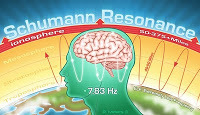 The normal standing wave created in the Schumann Cavity occurs at a wavelength equal to the circumference of the Earth, and at a base frequency (and highest intensity) of between 6-8 Hz (7.83 Hz). Some call this basic frequency the Earth's "heartbeat" or the "tuning fork" of the planet, suggesting that it generates natural healing properties when living things are entrained to its rhythm. It turns out that all biological systems resonate at this same frequency range. The electrical resonance of the Earth lies between 6-8 Hz. This coincides with alpha rhythms produced by the human brain during meditation, relaxation and creativity. Dolphins produce sound waves that coincide with the Schumann Resonance Frequency of 7.83 Hz. According to the AquaThought Foundation, human contact with dolphins induces both alpha brain state and hemispheric synchronization in the brain. Dr. H. König, Schumann's successor at Munich University, discovered that the dominant brain wave rhythm of all mammals is the alpha or resting state of 6-8 Hz.
The normal standing wave created in the Schumann Cavity occurs at a wavelength equal to the circumference of the Earth, and at a base frequency (and highest intensity) of between 6-8 Hz (7.83 Hz). Some call this basic frequency the Earth's "heartbeat" or the "tuning fork" of the planet, suggesting that it generates natural healing properties when living things are entrained to its rhythm. It turns out that all biological systems resonate at this same frequency range. The electrical resonance of the Earth lies between 6-8 Hz. This coincides with alpha rhythms produced by the human brain during meditation, relaxation and creativity. Dolphins produce sound waves that coincide with the Schumann Resonance Frequency of 7.83 Hz. According to the AquaThought Foundation, human contact with dolphins induces both alpha brain state and hemispheric synchronization in the brain. Dr. H. König, Schumann's successor at Munich University, discovered that the dominant brain wave rhythm of all mammals is the alpha or resting state of 6-8 Hz. When two vibrating systems resonate with each other, like the human brain and the global electric circuit, a rise in amplitude in the waves occurs. They are said to be in tune. Proponents suggest that a rise in amplitude causes a rise in our consciousness energy and that Schumann Resonance generates healing effects when living things are entrained to its frequency.
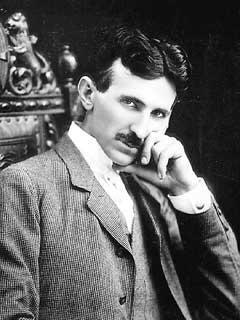 Nikola Tesla certainly understood this when he intuited that energy waves in the earth and the atmosphere could be used to transmit power to any point on the globe. He understood that "the surface of the Earth, the ionosphere and the atmosphere together form one gigantic electrical circuit" (Aqrawal)—an electrified Gaia, so to speak—and this formed the basis for his work on wireless energy transmission. Tesla was able to transmit power and energy wirelessly over long distances (via transverse waves and longitudinal waves). He transmitted extremely low frequencies (ELF) through the ground and between the Earth's surface and the Kennelly-Heaviside layer of the ionosphere. Tesla patented wireless transceivers that developed standing waves and it was he who discovered that the resonant frequency of the Earth was about 8 Hz and in the range of the Schumann Resonance or Cavity.
Nikola Tesla certainly understood this when he intuited that energy waves in the earth and the atmosphere could be used to transmit power to any point on the globe. He understood that "the surface of the Earth, the ionosphere and the atmosphere together form one gigantic electrical circuit" (Aqrawal)—an electrified Gaia, so to speak—and this formed the basis for his work on wireless energy transmission. Tesla was able to transmit power and energy wirelessly over long distances (via transverse waves and longitudinal waves). He transmitted extremely low frequencies (ELF) through the ground and between the Earth's surface and the Kennelly-Heaviside layer of the ionosphere. Tesla patented wireless transceivers that developed standing waves and it was he who discovered that the resonant frequency of the Earth was about 8 Hz and in the range of the Schumann Resonance or Cavity.It is interesting to note that ancient Chinese teachings tell us that humans require two environmental signals: the YANG (masculine) signal from above and the YIN (feminine) signal from below. These quite nicely correspond, respectively, to the relatively strong signal of the Schumann wave and the weaker geomagnetic waves originating from the planet. To achieve perfect health, say the teachings, both signals must be in balance. Balance is the key.
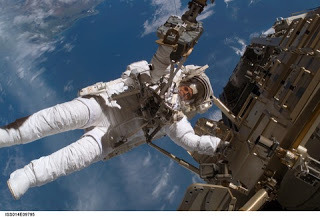 E. Jacobi at the University of Duesseldorf showed that the exclusive use of either Schumann (YANG) wave simulation or the geomagnetic (YIN) signal caused serious health problems. This was proven through experiments by Professor R. Wever from the Max Planck Institute for Behavioral Physiology in Erling-Andechs. He built an underground bunker which completely screened out magnetic fields and housed student volunteers for four weeks in this hermetically sealed environment. Wever noted that the student's circadian rhythms diverged and that they suffered emotional distress and migraine headaches. Symptoms disappeared after a brief exposure to 7.8 Hz. Similar complaints were reported by the first astronauts and cosmonauts, who, out in space, were also deprived of Schumann waves.
E. Jacobi at the University of Duesseldorf showed that the exclusive use of either Schumann (YANG) wave simulation or the geomagnetic (YIN) signal caused serious health problems. This was proven through experiments by Professor R. Wever from the Max Planck Institute for Behavioral Physiology in Erling-Andechs. He built an underground bunker which completely screened out magnetic fields and housed student volunteers for four weeks in this hermetically sealed environment. Wever noted that the student's circadian rhythms diverged and that they suffered emotional distress and migraine headaches. Symptoms disappeared after a brief exposure to 7.8 Hz. Similar complaints were reported by the first astronauts and cosmonauts, who, out in space, were also deprived of Schumann waves. 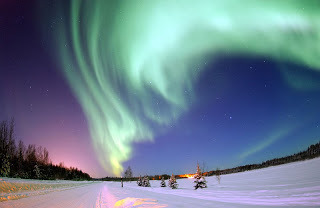 Modern technology appears to be threatening humanity's connection with earth's fundamental frequency and the natural vibrations of Schumann Resonance. Threats include artificial man-made EMF radiation, wireless technology, and high frequency heating microwaves pulsed at 2.45 GHz. Whether we co-evolved with Earth's natural electromagnetic environment or were created with Divine Intelligence to live in harmony with it, many experts believe that artificial man-made EMF radiation masks the natural beneficial frequency of the Earth and may create an environment that is literally `out of tune' with Nature itself.
Modern technology appears to be threatening humanity's connection with earth's fundamental frequency and the natural vibrations of Schumann Resonance. Threats include artificial man-made EMF radiation, wireless technology, and high frequency heating microwaves pulsed at 2.45 GHz. Whether we co-evolved with Earth's natural electromagnetic environment or were created with Divine Intelligence to live in harmony with it, many experts believe that artificial man-made EMF radiation masks the natural beneficial frequency of the Earth and may create an environment that is literally `out of tune' with Nature itself.  Symptoms of this imbalance in frequencies—sometimes called electro-pollution—may include higher stress, fatigue, loss of immunity, and an increase in the absorption of depression-inducing chemicals. Laboratory research has shown that exposing living cells to Schumann Resonance had the effect of "protecting" them from ambient EMFs, allowing the cells to increase their immune protection, and decrease the absorption of depression-inducing chemicals. Some researchers believe that by producing a 7.83 Hz pulse with a field generator (Schumann device), we can counter the effects of the irritating man-made fields. By replicating the Earth's natural rhythm, we may be providing ourselves (at least in our immediate vicinity) with a healthier natural environment. Such devices are currently marketed and in use, particularly in Europe. One example is Wolfgang Jaksch's Mediconsult.
Symptoms of this imbalance in frequencies—sometimes called electro-pollution—may include higher stress, fatigue, loss of immunity, and an increase in the absorption of depression-inducing chemicals. Laboratory research has shown that exposing living cells to Schumann Resonance had the effect of "protecting" them from ambient EMFs, allowing the cells to increase their immune protection, and decrease the absorption of depression-inducing chemicals. Some researchers believe that by producing a 7.83 Hz pulse with a field generator (Schumann device), we can counter the effects of the irritating man-made fields. By replicating the Earth's natural rhythm, we may be providing ourselves (at least in our immediate vicinity) with a healthier natural environment. Such devices are currently marketed and in use, particularly in Europe. One example is Wolfgang Jaksch's Mediconsult.Remember the "tuning fork"? Think of it: we are creatures of this planet, co-evolved with Earth's environment through the helix structure of our DNA and the water coursing through us; this is reflected in our behavior, culture, intelligence and beliefs. Our entire bodies resonate with all other life at a similar frequency as the planet Earth, our brains in their most "divine" state of creativity, prayer or meditation reflect the same frequency. We are a gestalt culmination of light, wave-pulse, matter and motion resonating with this beloved planet Earth.
Our minds and bodies "sing" its choral aria. I've heard it. Have you?
"There manifests itself in the fully developed being, Man, a desire mysterious, inscrutable and irresistible: to imitate nature, to create, to work himself the wonders he perceives. Long ago he recognized that all perceptible matter comes from a primary substance, or tenuity beyond conception, filling all space, the Akasa or luminiferous ether, which is acted upon by the life giving Prana or creative force, calling into existence, in never ending cycles all things and phenomena. The primary substance, thrown into infinitesimal whirls of prodigious velocity, becomes gross matter; the force subsiding, the motion ceases and matter disappears, reverting to the primary substance." - Nikola Tesla, 1907
Here are some of my related articles, which might interest you:
Cymatics: Exploring How Frequency Changes the Very Nature of Matter and Energy
The Mozart Effect: The Power of Music
Rupert Shelldrake and the Physics of Angels (on morphic resonance)
Darwin and Lemarck on Soft Inheritance
Author's Retreat: Changing the World with your Mind and Faith
What's BMI and Why Should I Care?
Artificial Intelligence: Part 1—Neural Implants
Artificial Intelligence: Part 2—The Invisible Computer
Other Interesting Reading:
Gray, J.A., 1982, The Neuropsychology of Anxiety: An Enquiry into the Functions of the Septo-Hippocampal System. Clarendon Press.
Cherry, N.J., 2002, Schumann Resonances, a plausible biophysical mechanism for the human health effects of Solar/Geomagnetic Activity, Natural Hazards 26(3), p 279-331
Cherry, N.J. 2003, Human intelligence: The brain, an electromagnetic system synchronized by the Schumann Resonance signal, Medical Hypotheses 60(60):843-4
Cherry,N. Cell phone radiation poses a serious biological and health risk http://www.drscheiner-muenchen.de/Che...
König, H.L Bioinformation - Electrophysical Aspects. In: Electromagnetic Bioinformation, Popp, F.A., Becker,G.,König, H.L.Peschka,W.,(eds.) Urban und Schwarzenberg p 25, 1979
Ludwig,W `Informative Medizin' VGM Verlag fuer Ganzheitsmedizin, Essen, 1999
Schumann, W.O.Ueber die strahlungslosen Eigenschwingungen einer leitenden Kugel, die von einer Luftschicht und einer Ionosphaerenhuelle umgeben ist, Z.Naturforsch. 7a, 149, 1952
Schumann W.O., König, H. Ueber die Beobachtung von Atmospherics bei geringsten Frequenzen, Naturwissenschaften, 41, 183, 1954
Published on October 20, 2010 13:17
October 7, 2010
Nikola Tesla and Resonating Earth Frequencies
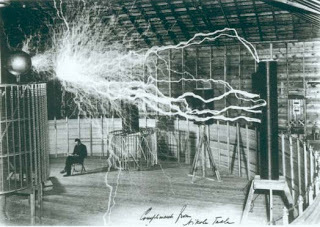 His name is not generally celebrated or well known, but this intense man basically invented the Twentieth Century. "Like all great magicians, he has all but disappeared," says Sidian M.S. Jones in her blog. Nikola Tesla is, however, responsible for so many things we often take for granted or think someone else invented: things like alternating current, wireless communication, the electric motor, lasers and radar, x-rays, neon, robotics, remote control, the expansion of ballistics, nuclear physics and theoretical physics, cellular technology, and even tactical space-warfare. Yet, he died alone, destitute, in a New York hotel room, ridiculed and vilified as a "mad scientist" – even a buffoon. How did this come to be?
His name is not generally celebrated or well known, but this intense man basically invented the Twentieth Century. "Like all great magicians, he has all but disappeared," says Sidian M.S. Jones in her blog. Nikola Tesla is, however, responsible for so many things we often take for granted or think someone else invented: things like alternating current, wireless communication, the electric motor, lasers and radar, x-rays, neon, robotics, remote control, the expansion of ballistics, nuclear physics and theoretical physics, cellular technology, and even tactical space-warfare. Yet, he died alone, destitute, in a New York hotel room, ridiculed and vilified as a "mad scientist" – even a buffoon. How did this come to be?Tesla was born two years prior to when Darwin published The Origin of Species. In 1884, when he was eighteen years old and penniless, Tesla emigrated from Serbia to New York and presented himself to Thomas Edison with a letter of recommendation that said: "I know two great men and you are one of them; the other is this young man."
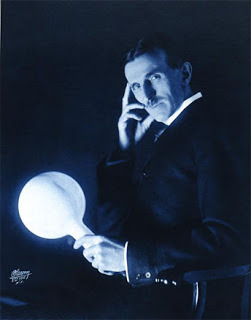 An unbridled genius with a photographic memory, Tesla approached his scientific and technological discoveries with an almost naïve innocence and intensity that sparked jealousy by many peers who called him arrogant and foolhardy. Like many great geniuses, Tesla was indeed somewhat of a paradox. He was a mystic who recited poetry and spoke eight languages. Reserved yet an accomplished showman, this avant-garde scientist became notorious for his exotic claims and splashy press shots. Popular publicity pictures depict him seated in the midst of crackling arch-lightning, casually reading a book, relaxed amid his electric storm. Yes, at home with the power of weather and electricity. Close friends and colleagues described him as a soft-spoken gentleman with a genial smile and a noble bearing, a man of "distinguished sincerity, modesty, refinement and generosity." Hardly arrogant; more like passionate. His friend Hawthorne wrote that "seldom did one meet a scientist or engineer who was also a poet, a philosopher, an appreciator of fine music, a linguist [he was fluent in eight languages], and a connoisseur of food and drink." Tesla was a humanitarian who loved animals. He argued that animal slaughter was "wanton and cruel" and eventually became a vegetarian.
An unbridled genius with a photographic memory, Tesla approached his scientific and technological discoveries with an almost naïve innocence and intensity that sparked jealousy by many peers who called him arrogant and foolhardy. Like many great geniuses, Tesla was indeed somewhat of a paradox. He was a mystic who recited poetry and spoke eight languages. Reserved yet an accomplished showman, this avant-garde scientist became notorious for his exotic claims and splashy press shots. Popular publicity pictures depict him seated in the midst of crackling arch-lightning, casually reading a book, relaxed amid his electric storm. Yes, at home with the power of weather and electricity. Close friends and colleagues described him as a soft-spoken gentleman with a genial smile and a noble bearing, a man of "distinguished sincerity, modesty, refinement and generosity." Hardly arrogant; more like passionate. His friend Hawthorne wrote that "seldom did one meet a scientist or engineer who was also a poet, a philosopher, an appreciator of fine music, a linguist [he was fluent in eight languages], and a connoisseur of food and drink." Tesla was a humanitarian who loved animals. He argued that animal slaughter was "wanton and cruel" and eventually became a vegetarian.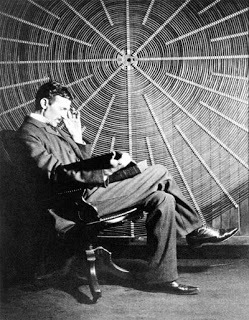 Tesla went head to head with Thomas Edison over the best method to electrify the world and emerged victorious; his Alternating Current (AC) won over Edison's Direct Current (DC). Tesla sold his patents to Westinghouse and showed his induction motor devices for generating power at the 1893 Columbia Exhibition at the Chicago World's Fair. He later worked with Westinghouse to harness the power of Niagara Falls. While Tesla's role in the development of delivering electricity is generally known, many of his other accomplishments remain obscure and unacknowledged; it was only upon his death that the courts declared Tesla the inventor of radio. The commercially successful Marconi, who had been previously credited with its discovery, had merely built on what Tesla had already discovered.
Tesla went head to head with Thomas Edison over the best method to electrify the world and emerged victorious; his Alternating Current (AC) won over Edison's Direct Current (DC). Tesla sold his patents to Westinghouse and showed his induction motor devices for generating power at the 1893 Columbia Exhibition at the Chicago World's Fair. He later worked with Westinghouse to harness the power of Niagara Falls. While Tesla's role in the development of delivering electricity is generally known, many of his other accomplishments remain obscure and unacknowledged; it was only upon his death that the courts declared Tesla the inventor of radio. The commercially successful Marconi, who had been previously credited with its discovery, had merely built on what Tesla had already discovered.Tesla disagreed with scientists of quantum mechanics and the theory of relativity. He predicted that quantum mechanics and relativity theorists would eventually enter a crisis and he believed that the universe was filled with "ether", which was the source of matter.
The scientific community ultimately shunned Tesla for his "bizarre" claims, eccentric personality, his many phobias and his serious obsessive-compulsive disorder. These severely hurt his reputation. Condemnations spilled over into the media. In 1941, the first of Max Fleischer's Superman comics, depicted Tesla as a mad gentleman scientist evoking the dark forces of his insane inventions like evil robots and deadly lasers. Even recent depictions of him feature Tesla as an eccentric, if not unstable man (e.g., the motion picture, Prestige).
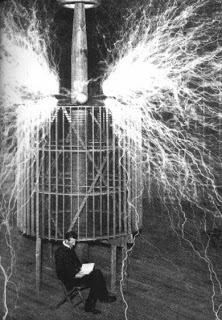 Tesla readily admitted that scientific solutions came to him in shamanic dreams and flashes of insight. His visions often linked to a word or an idea or a perfectly formed solution and were accompanied by blinding flashes of light. Tesla could precisely visualize an invention in his mind, but was less adept at communicating it to others. "When the word was spoken to me, the image of the object would appear to me vividly…and sometimes I was unable to distinguish whether what I saw was tangible or not." His idea for AC current came to him as a complete vision one day when he was strolling in a Budapest park as a young man. He seldom made drawings; keeping everything in his mind. This was undoubtedly a good thing, considering that his labs kept burning down. Tesla confided that his first thoughts about electricity came to him when he was three years old and saw sparks as he petted his cat. His sensitive vision and hearing allowed him see a light trails behind people walking in the snow.
Tesla readily admitted that scientific solutions came to him in shamanic dreams and flashes of insight. His visions often linked to a word or an idea or a perfectly formed solution and were accompanied by blinding flashes of light. Tesla could precisely visualize an invention in his mind, but was less adept at communicating it to others. "When the word was spoken to me, the image of the object would appear to me vividly…and sometimes I was unable to distinguish whether what I saw was tangible or not." His idea for AC current came to him as a complete vision one day when he was strolling in a Budapest park as a young man. He seldom made drawings; keeping everything in his mind. This was undoubtedly a good thing, considering that his labs kept burning down. Tesla confided that his first thoughts about electricity came to him when he was three years old and saw sparks as he petted his cat. His sensitive vision and hearing allowed him see a light trails behind people walking in the snow.Tesla was influenced by the Vedic teachings of the Swami Vivekanda and used his spiritual beliefs and the science of the ancient works of the Vedas (prana, akasha and concepts of "ether") to describe the physics of the universe. He even adopted Sanskrit words to name some of his fundamental concepts about matter and energy. Tesla used to say, "The present time is theirs (the quantum mechanics scientists), but the future is mine."
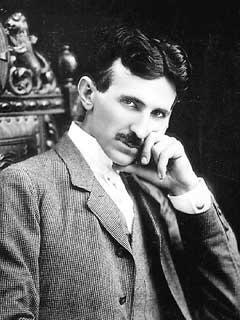 Tesla investigated harvesting the energy in space. He believed that humanity would eventually succeed in attaching machinery to the very wheelwork of nature: "Ere many generations pass, our machinery will be driven by a power obtainable at any point of the universe." An altruist at heart, Tesla was determined to present the world with the gift of electrical power made equally available to all peoples of the world. He intuited the resonance of the earth and determined that waves of energy in the earth could be used to transport power to any point on the globe. He built Wardencliff as a global power and communications system: based on a system of towers that would pull down energy from the ionosphere to transmit electricity throughout the world without wires. This meant essentially free energy for everyone: an amazing break through for the world—electrical power that could be generated without fuel, wind, or solar energy. Some, however, visualized a huge negative impact to the fuel and power industry. Wardencliff was swiftly shut down, funding retracted and the towers destroyed because they posed a security risk.
Tesla investigated harvesting the energy in space. He believed that humanity would eventually succeed in attaching machinery to the very wheelwork of nature: "Ere many generations pass, our machinery will be driven by a power obtainable at any point of the universe." An altruist at heart, Tesla was determined to present the world with the gift of electrical power made equally available to all peoples of the world. He intuited the resonance of the earth and determined that waves of energy in the earth could be used to transport power to any point on the globe. He built Wardencliff as a global power and communications system: based on a system of towers that would pull down energy from the ionosphere to transmit electricity throughout the world without wires. This meant essentially free energy for everyone: an amazing break through for the world—electrical power that could be generated without fuel, wind, or solar energy. Some, however, visualized a huge negative impact to the fuel and power industry. Wardencliff was swiftly shut down, funding retracted and the towers destroyed because they posed a security risk. In the latter years of his life, Tesla worked on plans for a directed-energy weapon, a Teleforce or particle beam weapon "that would put an end to all war," he said. It consisted of an open-ended vacuum tube with a gas jet seal that charged particles to millions of volts and propelled non-dispersive particle streams through electrostatic repulsion to about 48 times the speed of sound. Tesla tried to interest the US War Department in the device. He also offered the invention to European countries. None of the governments purchased a contract to build the device. Various theories persist regarding the nature of this device and the whereabouts of Tesla's complete schematics for it. Immediately after his death, his effects were confiscated and declared top secret by the War Department of the U.S. and the room's safe opened. The FBI never found the schematics nor any prototype.
Tesla's Legacy:
1882: Tesla comes up with the induction motor and devices that use rotating magnetic fields
1884: Tesla arrives in New York and is hired by Thomas Edison to redesign the company's direct current generators
1886: Tesla quits due to a wage dispute and works as a laborer
1887: Tesla constructs the initial brushless alternating current induction motor and develops the principles of the Tesla coil (a high frequency air-core transformer or magnifying transmitter), other ways to increase the intensity of electrical oscillations (including condenser discharge transformations) and X-rays using a single terminal vacuum tube design (called braking radiation)
1891: Tesla established his South Fifth Avenue New York laboratory. He later established a lab on 46th Houston Street and lit electric lamps wirelessly at both locations.
1892: Tesla developed polyphase power systems and researched rotating magnetic field principles.
1893: Tesla investigated high frequency alternating currents and he generated AC of one million volts using a conical Tesla coil. He investigated the skin effect in conductors and invented a machine for inducing sleep, cordless gas discharge lamps. He built the first radio transmitter, transmitting electromagnetic energy without wires. Tesla demonstrated his fluorescent lamps and single node bulbs at the World's Fair in Chicago in 1893.
1895: Tesla developed the Tesla generator in conjunction with developments in the liquefaction of air. Tesla proposed a "world system" for the transmission of electrical energy without wires that depended on the electrical conductivity of the earth. He demonstrated the transmission of electrical energy without wires as early as 1891. This movement of energy through space and matter (not just the production of voltage across a conductor) is called the Tesla effect. Just prior to his completion of his work the filing of a patent application, his lab burned down and all his equipment, models and inventions were destroyed. Immediately after the fire, Linde, in Germany, filed a patent application for the same process.
1896: Along with partner George Westinghouse, Tesla created the world's first hydro electric system at Niagara Falls.
1899: Tesla set up his lab in Colorado Springs, which had enough room for his high-voltage, high-frequency experiments. He told reporters that he "was conducting wireless telegraphy experiments transmitting signals from Pikes Peak to Paris and concerning the ionosphere and the ground's telluric currents via transverse waves and longitudinal waves. He proved that the earth was a conductor and produced artificial lightning. It was also at this lab that Tesla observed unusual signals that he attributed to extraterrestrial radio wave communications.
1902: Tesla began building the Wardenclyffe Tower facility (essentially a wireless communication and power transmitting system) but got scooped for his invention of radio by Marconi in 1904. In 1917 the Wardenclyffe Tower facility was torn down, after which he built Telefunken Wireless Station in Layville, Long Island. It was seized and torn down by the Marines, who claimed it could be used by German spies.
1906: Tesla demonstrated his 200 hp bladeless turbine engines
1917: Tesla established principles about frequency and power level for radar. By the 1920s Tesla was negotiating with the UK about a ray system.
1934: Tesla announces the Teleforce weapon, a particle beam weapon. based upon a large Van de Graaff generator of unique design and a special type of open-ended vacuum tube.
Published on October 07, 2010 23:22
September 24, 2010
The Face of a Hero: Hero Meme
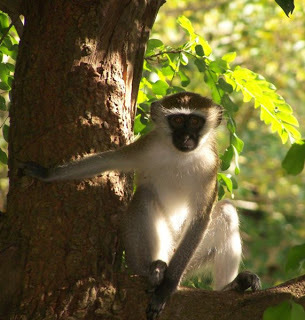 In a previous post about "A Portrait of the Artist as a Real Hero" I defined a real altruist as Nature's Real Hero and described the Vervet Monkey as an example. In literature and in the "hero's journey", the hero is defined as the altruist, willing to sacrifice herself for the sake of the greater good.
In a previous post about "A Portrait of the Artist as a Real Hero" I defined a real altruist as Nature's Real Hero and described the Vervet Monkey as an example. In literature and in the "hero's journey", the hero is defined as the altruist, willing to sacrifice herself for the sake of the greater good.I've written several posts on altruism, the altruist (the true definition of the hero) and the hero, including:
Altruism at the Heart of True Happiness
Gaia vs. Medea: A Case for Altruism
...
Published on September 24, 2010 19:19
September 10, 2010
The Power of the Mind and the Phantom Hand
Such stuff as dreams are made on—William Shakespeare
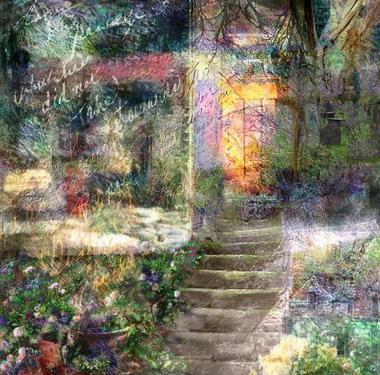 Vilayanur S. Ramachandran and Diane Rogers-Ramachandran at the Center for Brain and Cognition at the University of California in San Diego conducted an incredibly illuminating experiment on mind and perception (reported in the Premiere issue of Scientific American Mind, Feb 2005).
Vilayanur S. Ramachandran and Diane Rogers-Ramachandran at the Center for Brain and Cognition at the University of California in San Diego conducted an incredibly illuminating experiment on mind and perception (reported in the Premiere issue of Scientific American Mind, Feb 2005).
Briefly, the experiment involved a subject whose right hand was concealed from her while a fake plastic right hand was placed in full view. The experimenter...
 Vilayanur S. Ramachandran and Diane Rogers-Ramachandran at the Center for Brain and Cognition at the University of California in San Diego conducted an incredibly illuminating experiment on mind and perception (reported in the Premiere issue of Scientific American Mind, Feb 2005).
Vilayanur S. Ramachandran and Diane Rogers-Ramachandran at the Center for Brain and Cognition at the University of California in San Diego conducted an incredibly illuminating experiment on mind and perception (reported in the Premiere issue of Scientific American Mind, Feb 2005).Briefly, the experiment involved a subject whose right hand was concealed from her while a fake plastic right hand was placed in full view. The experimenter...
Published on September 10, 2010 11:43
August 28, 2010
The Hero's Journey in Darwin's Paradox: The Iroquios Locks
 Toulouse and I recently embarked on another road trip from Nova Scotia west through Toronto and beyond. Somewhere between Saint-Louis-du-Ha! Ha!, New Brunswick, and Montreal, I had a eureka moment: why not follow Julie's momentous trek across the future Ontario heath toward Icaria-5 (Toronto), as she follows her "hero's journey" toward redemption and securing safety for her threatened family.
Toulouse and I recently embarked on another road trip from Nova Scotia west through Toronto and beyond. Somewhere between Saint-Louis-du-Ha! Ha!, New Brunswick, and Montreal, I had a eureka moment: why not follow Julie's momentous trek across the future Ontario heath toward Icaria-5 (Toronto), as she follows her "hero's journey" toward redemption and securing safety for her threatened family.Julie Crane is the hero in my SF thriller Darwin's Paradox . She's a uniquely gifted veemeld (someone...
Published on August 28, 2010 16:56
August 6, 2010
Join Nina for a Free Writing Webinar
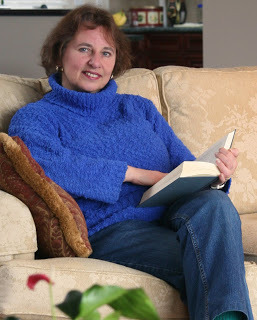
Nina, the Writing Coach
Are you looking to get published? What's stopping you?
Join me for a FREE Webinar through Writer's Digest University on how to improve your writing and succeed in getting published.
I'm joined by journalist and editor Vernon Oikle on "Toolkit Talks", a conversation in which we share great tips on how to get published. We answer some commonly asked questions provided by Writer's Digest Magazine editors; questions faced by writers getting started as well as those ...
Published on August 06, 2010 21:46

